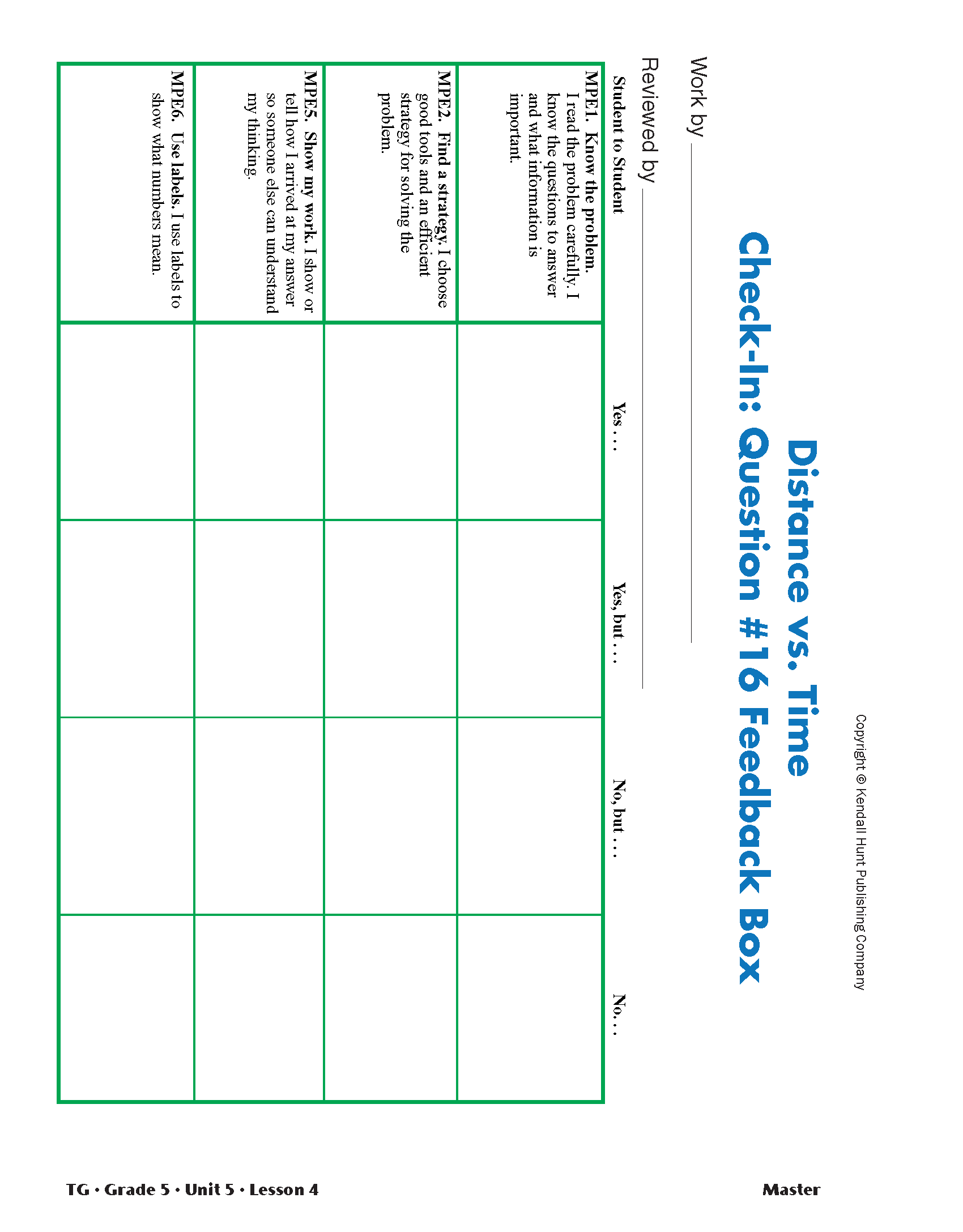Distance vs. Time
Est. Class Sessions: 4Summarizing the Lesson
After students display their solution to Question 16, discuss Question 17.
Use the following questions to help students think about their walking pace:
Students should be able to see that it would be difficult to keep the same pace the entire hour, even without changing the walking conditions.
Refer students to the work displayed around the room for Question 16. Ask students to look back at the predictions they made in Questions 1–2. Ask if their estimates were close.
Distribute the Distance vs. Time Check-In: Question 16 Feedback Box Master to each student pair. Tell students that they are going to look at one of the pieces of work displayed around the room and provide feedback to their peers. Assign each pair of students a piece of student work to review using the Feedback Box. Students should write notes on the Feedback Box that specifically describe what the students did well and what they need to work on. For example, if a piece of work has some numbers labeled but not enough to tell what the numbers mean, the reviewer would respond with “Yes, but you did not include labels on your ratio, so I could not tell what they meant.”
After student pairs have finished their review, have them return to their student work to discuss the feedback provided. Encourage students to revise their work based on this discussion.














